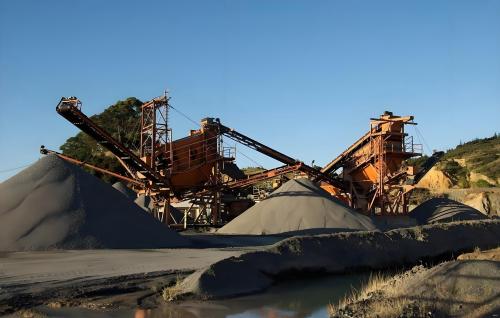Ore beneficiation is a production process that prepares raw materials for metal smelting and the chemical industry, and froth flotation has become the most important beneficiation method. Almost all mineral resources can be separated using flotation.
Currently, flotation is widely applied in the beneficiation of ferrous metals—primarily iron and manganese—such as hematite, smithsonite, and ilmenite; precious metals like gold and silver; non-ferrous metals such as copper, lead, zinc, cobalt, nickel, molybdenum, and antimony, including sulfide minerals like galena, sphalerite, chalcopyrite, bornite, molybdenite, and pentlandite, as well as oxide minerals like malachite, cerussite, hemimorphite, cassiterite, and wolframite. It is also used for non-metallic salt minerals such as fluorite, apatite, and barite, soluble salt minerals like potash and rock salt, and non-metallic minerals and silicate minerals such as coal, graphite, sulfur, diamonds, quartz, mica, feldspar, beryl, and spodumene.
Flotation has accumulated extensive experience in the field of beneficiation, with continuous technological advancements. Minerals that were previously considered to have no industrial value due to their low grade or complex structure are now being recovered (as secondary resources) through flotation.
As mineral resources become increasingly lean, with useful minerals distributed more finely and intricately within ores, the difficulty of separation has grown. To reduce production costs, industries such as metallurgical materials and chemicals have set higher quality standards and precision requirements for processing raw materials—that is, the separated products.
On one hand, there is a need to improve quality, and on the other, the challenge of separating fine-grained minerals has made flotation increasingly superior to other methods, establishing it as the most widely used and promising beneficiation technique today. Initially applied to sulfide minerals, flotation has gradually expanded to include oxide minerals and non-metallic minerals. Today, the global annual volume of minerals processed by flotation exceeds several billion tons.
In recent decades, the application of flotation technology has expanded beyond mineral processing engineering to fields such as environmental protection, metallurgy, papermaking, agriculture, chemicals, food, materials, medicine, and biology.
Examples include the flotation recovery of valuable components from intermediate products in pyrometallurgy, volatiles, and slag; the flotation recovery of leaching residues and displacement precipitates in hydrometallurgy; the use of flotation in the chemical industry for de-inking recycled paper and recovering fibers from pulp waste liquor; and typical environmental engineering applications such as extracting heavy crude oil from riverbed sediments, separating fine solid pollutants from wastewater, and removing colloids, bacteria, and trace metal impurities.
With improvements in flotation processes and methods, as well as the emergence of new, highly efficient flotation reagents and equipment, flotation will find even broader applications across more industries and fields. However, it is worth noting that the use of flotation involves higher processing costs (compared to magnetic or gravity separation), stricter requirements for feed particle size, numerous influencing factors in the flotation process demanding high operational precision, and potential environmental hazards from wastewater containing residual reagents.
Post time: Nov-14-2025


